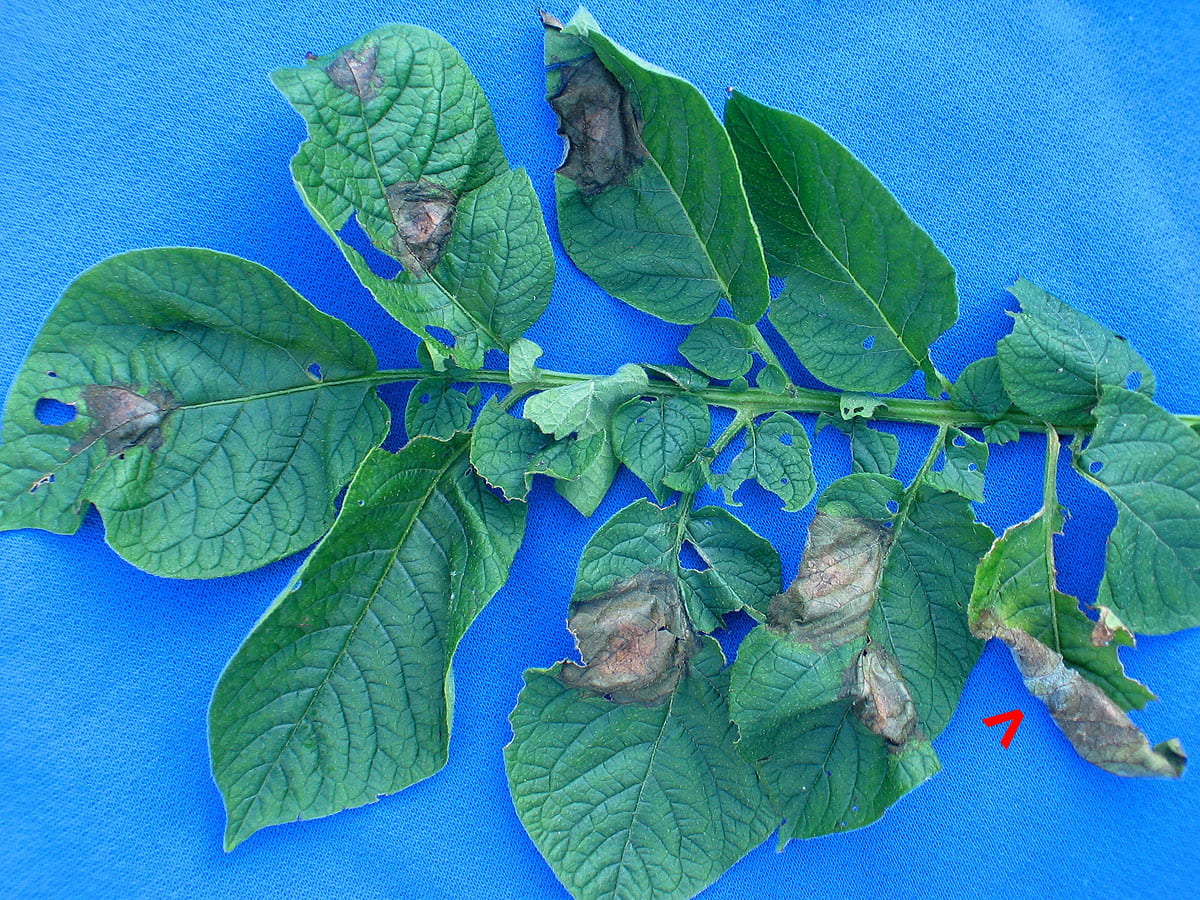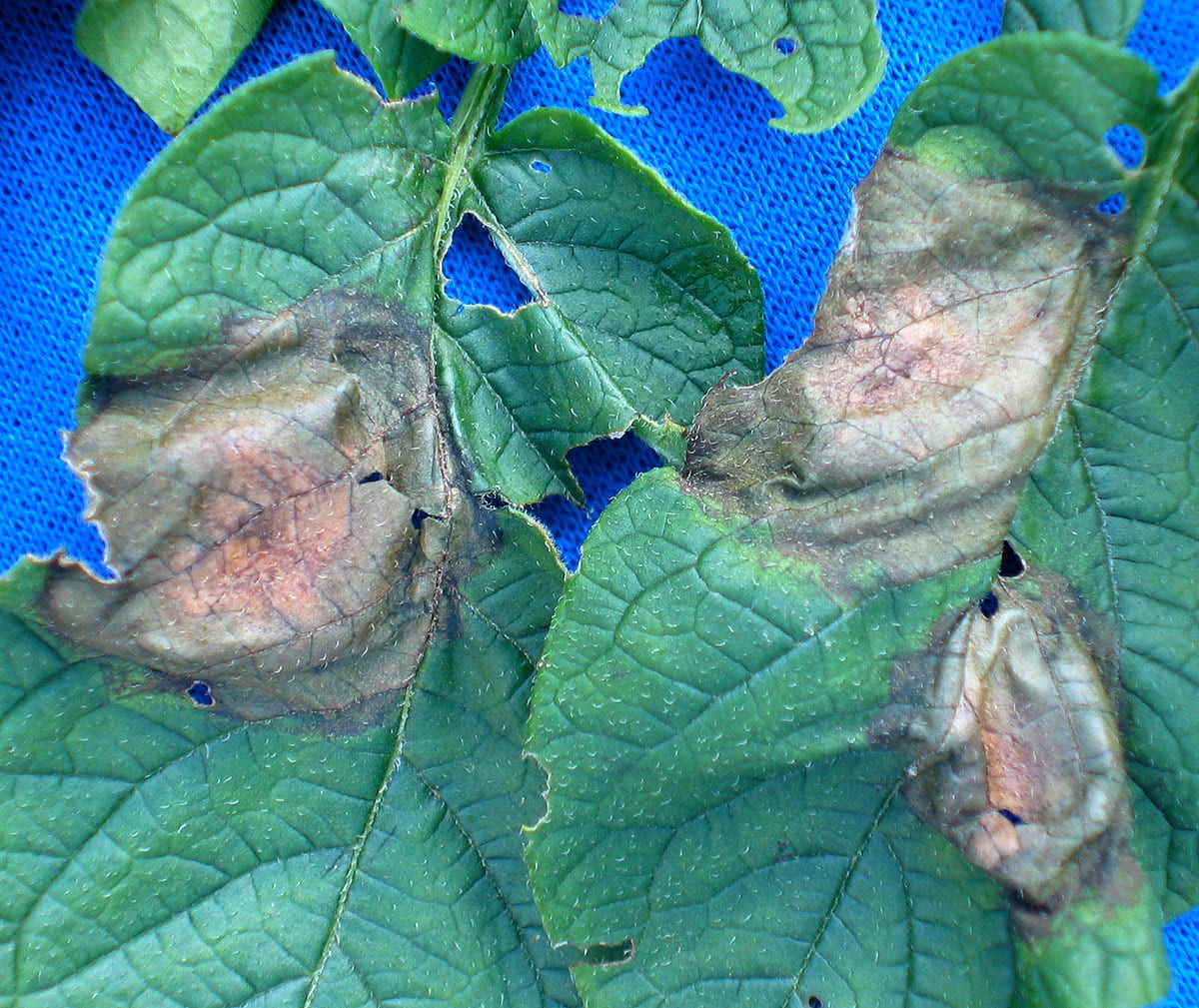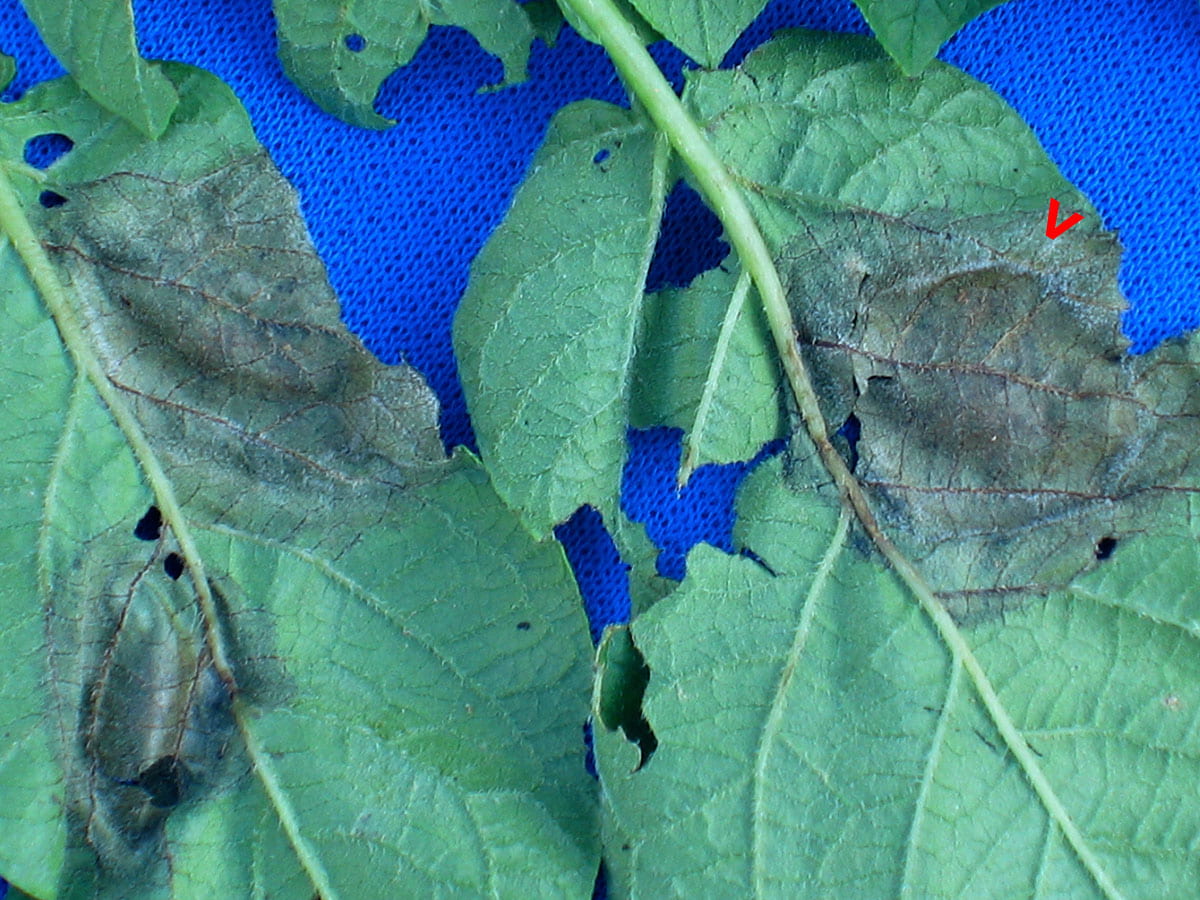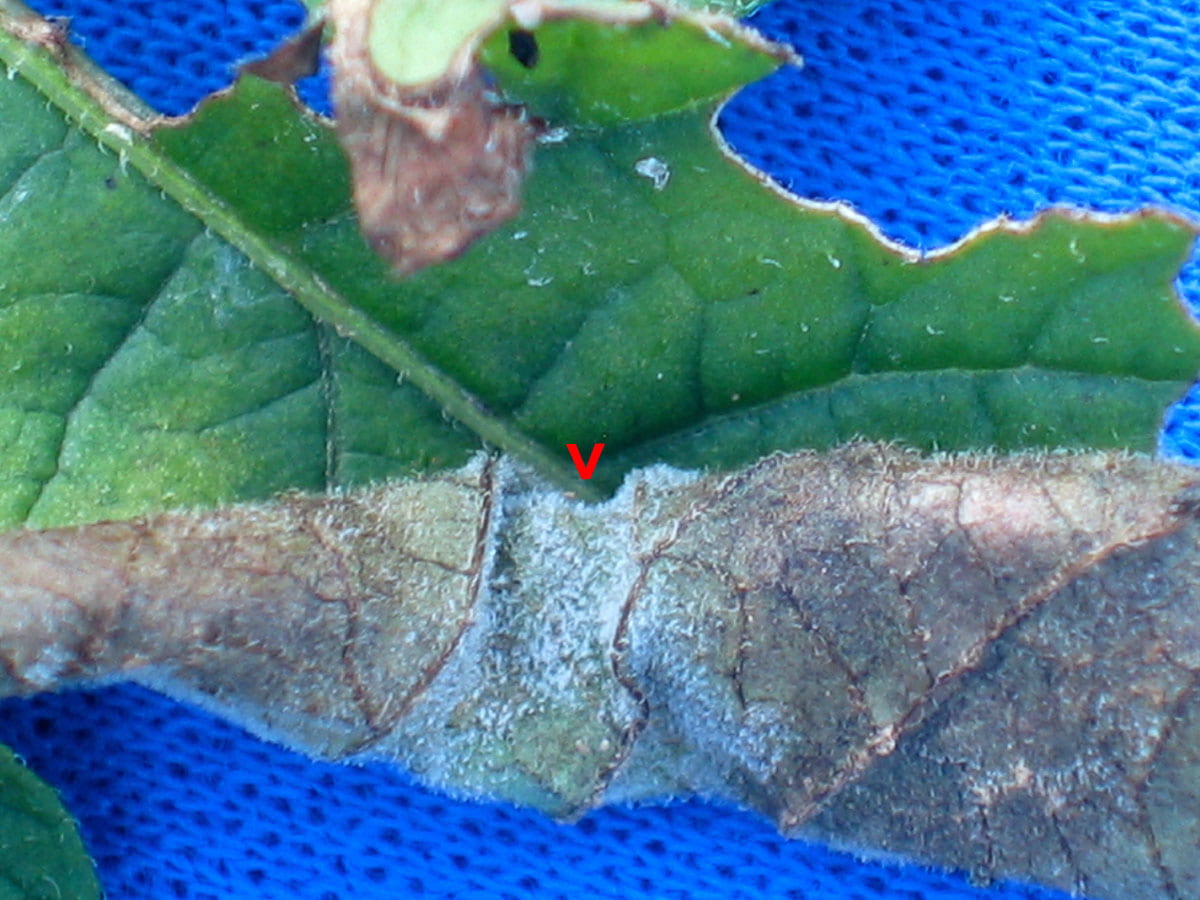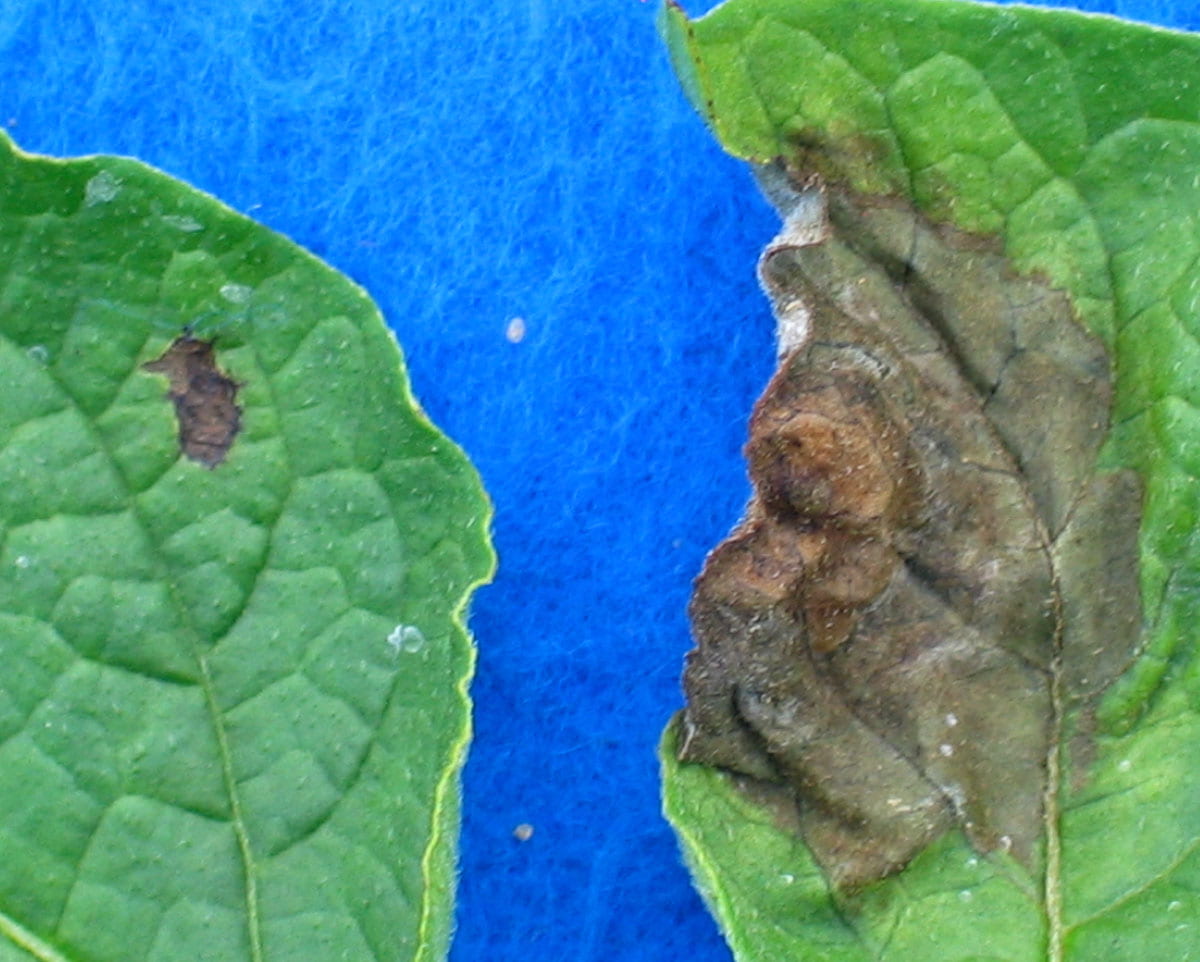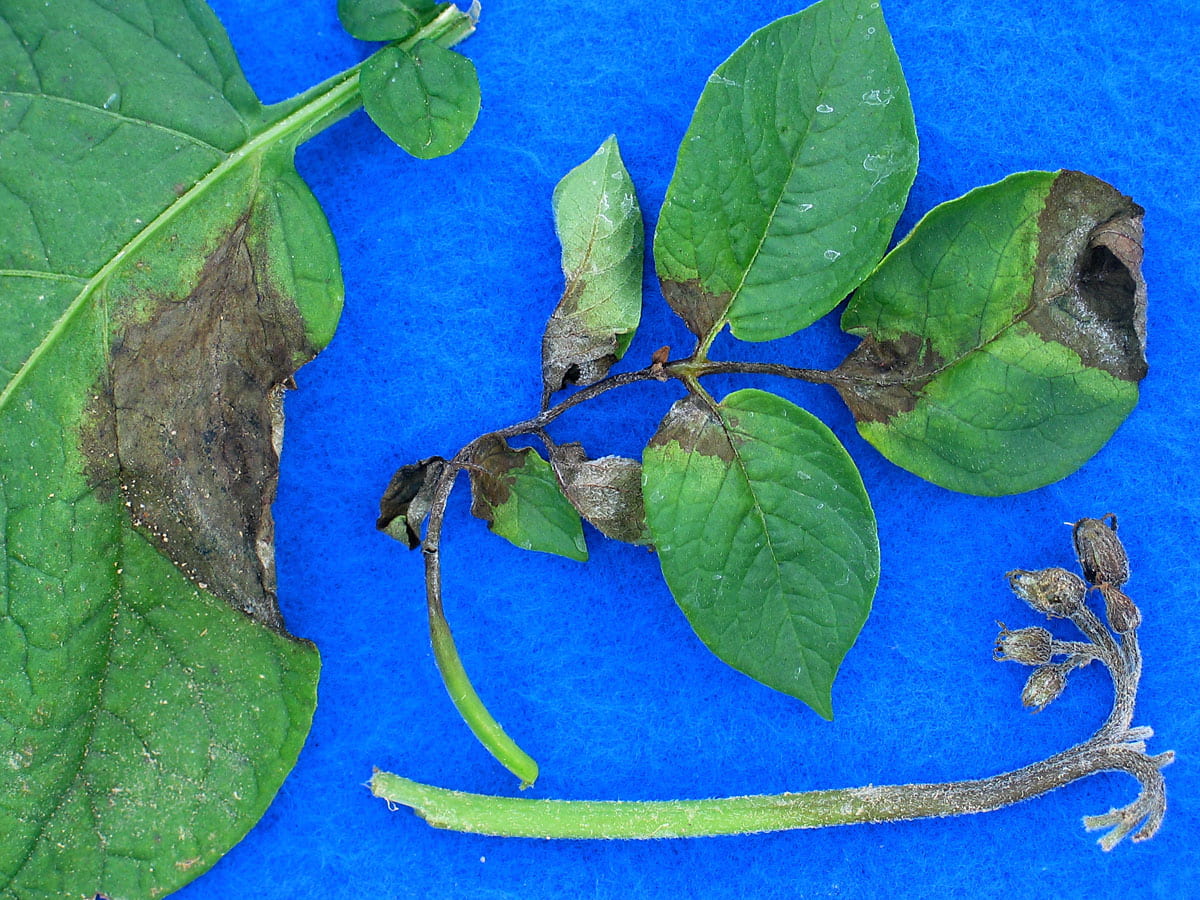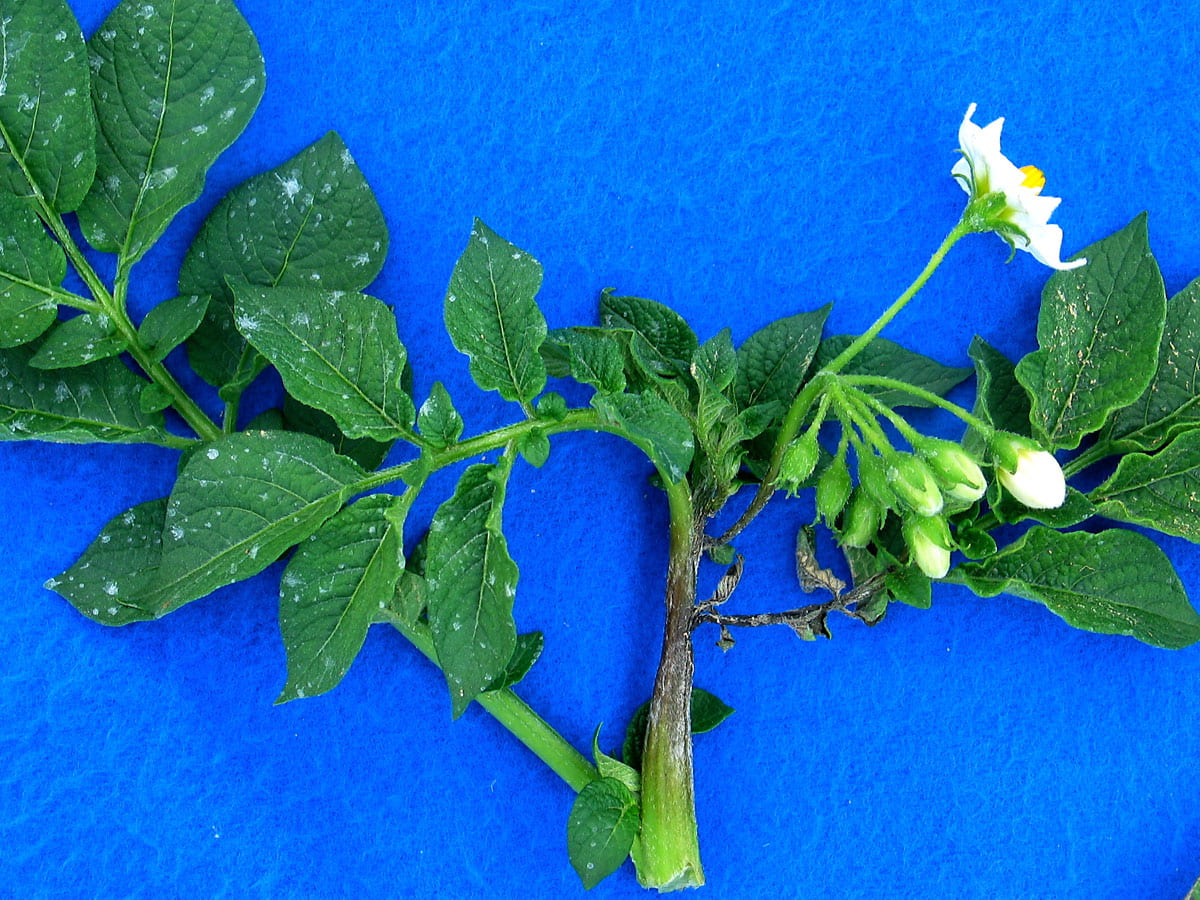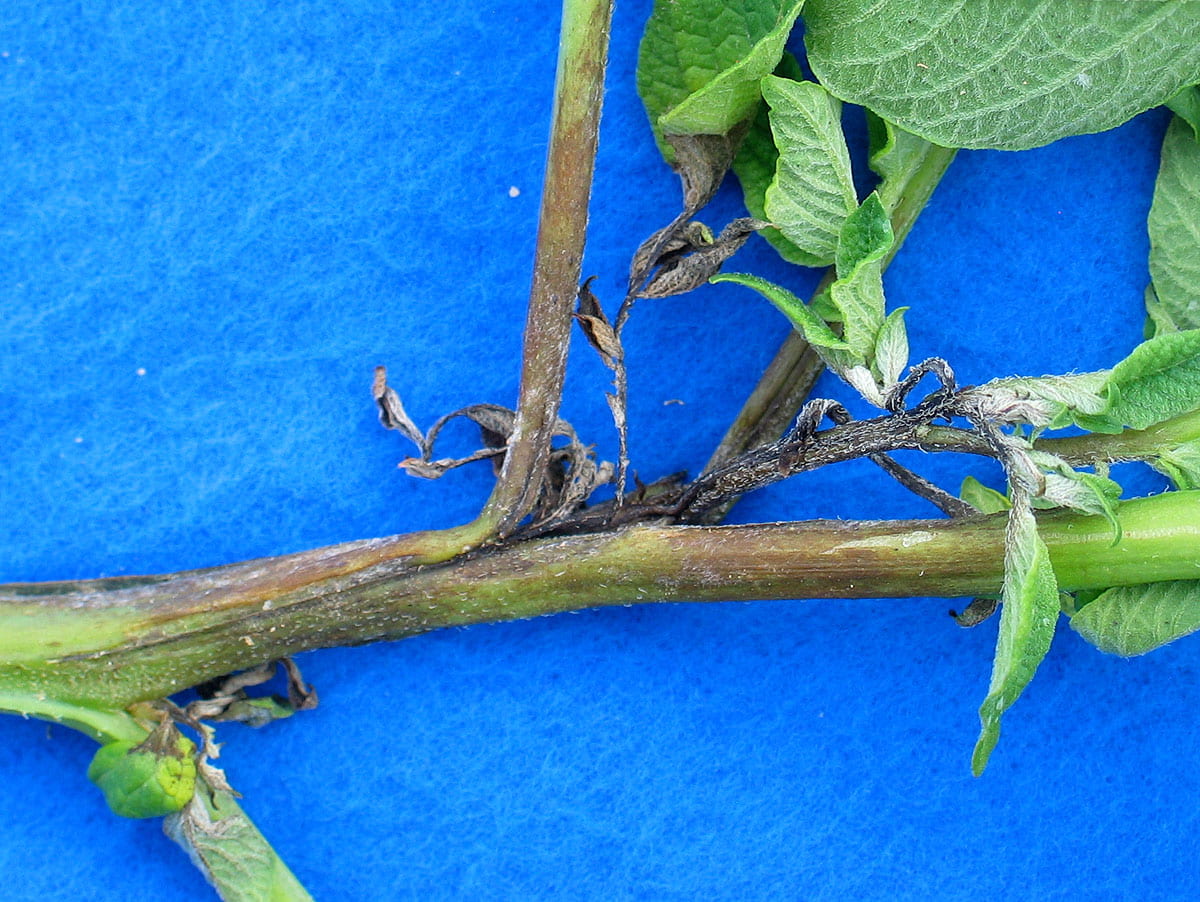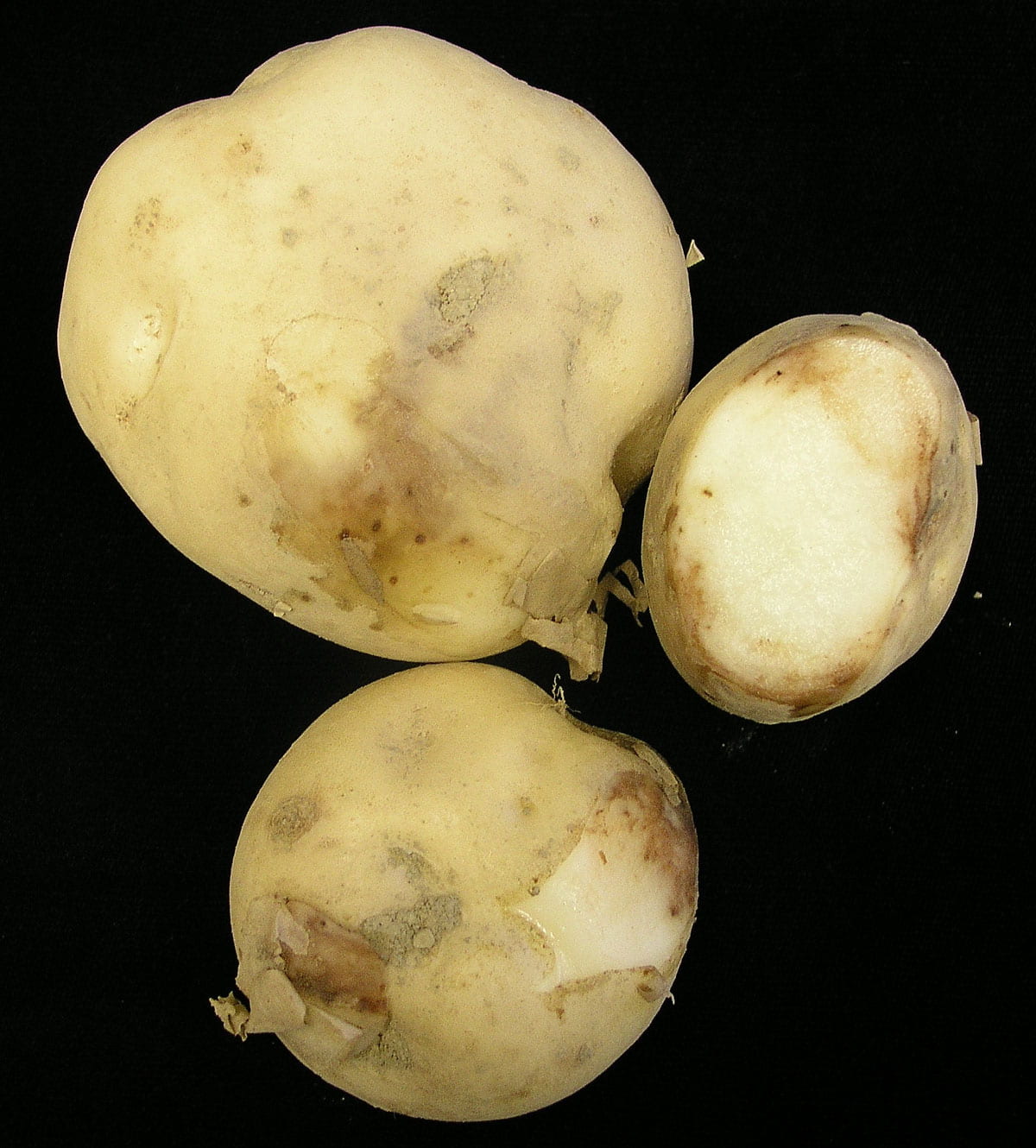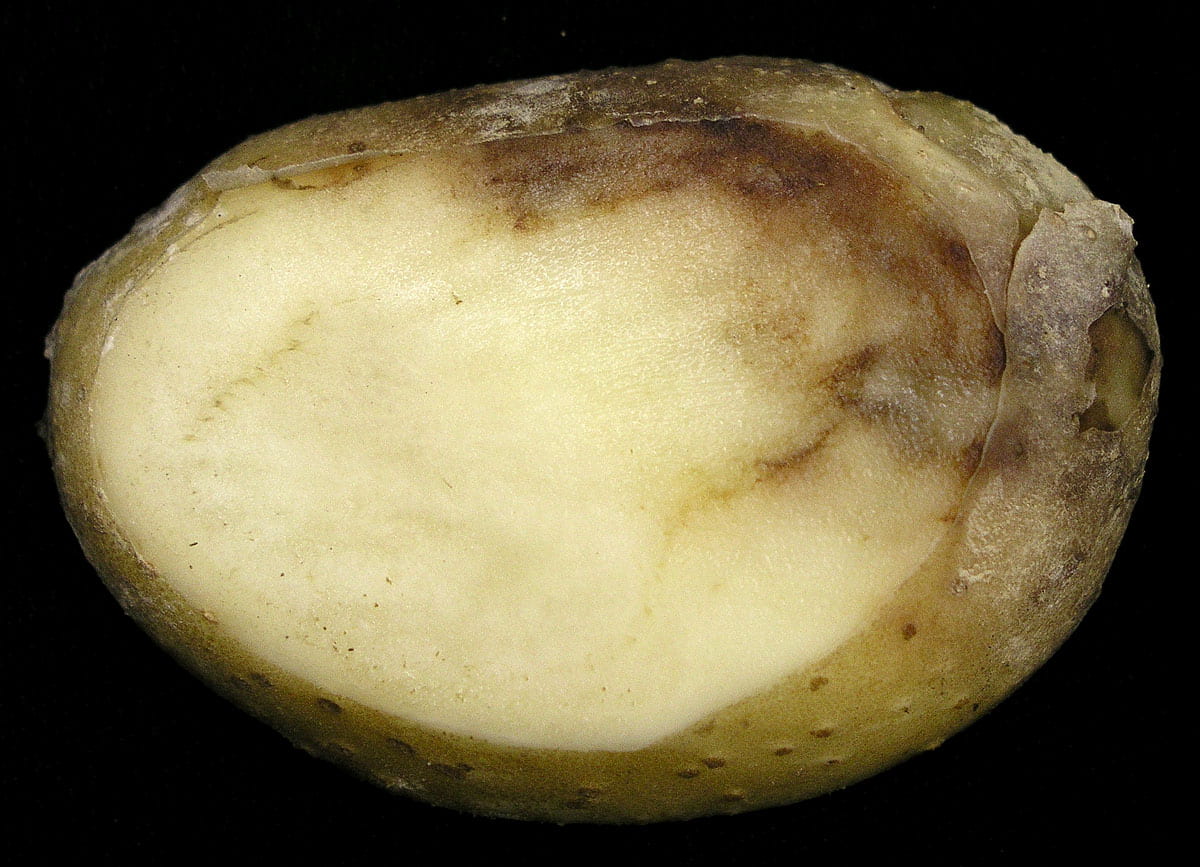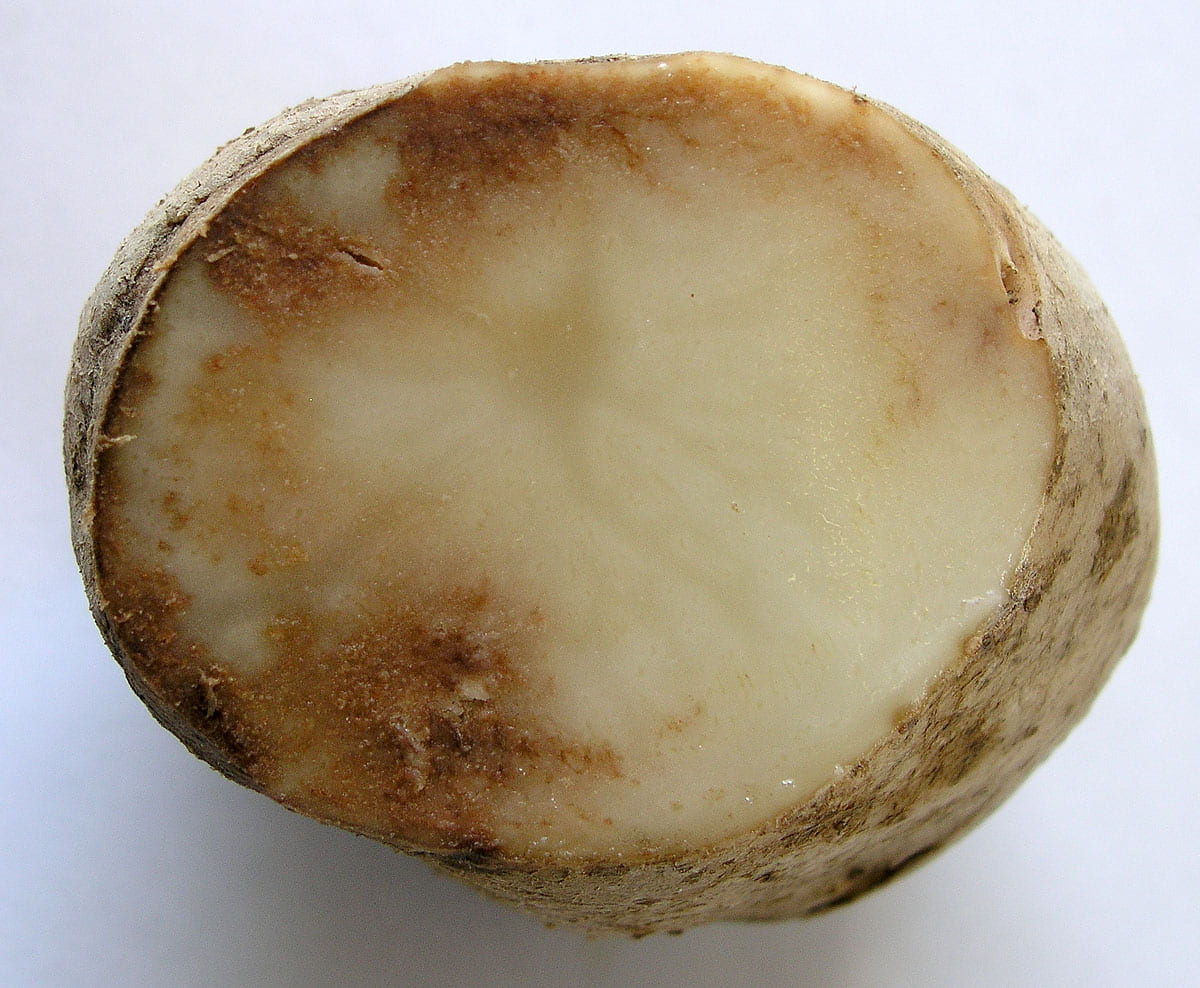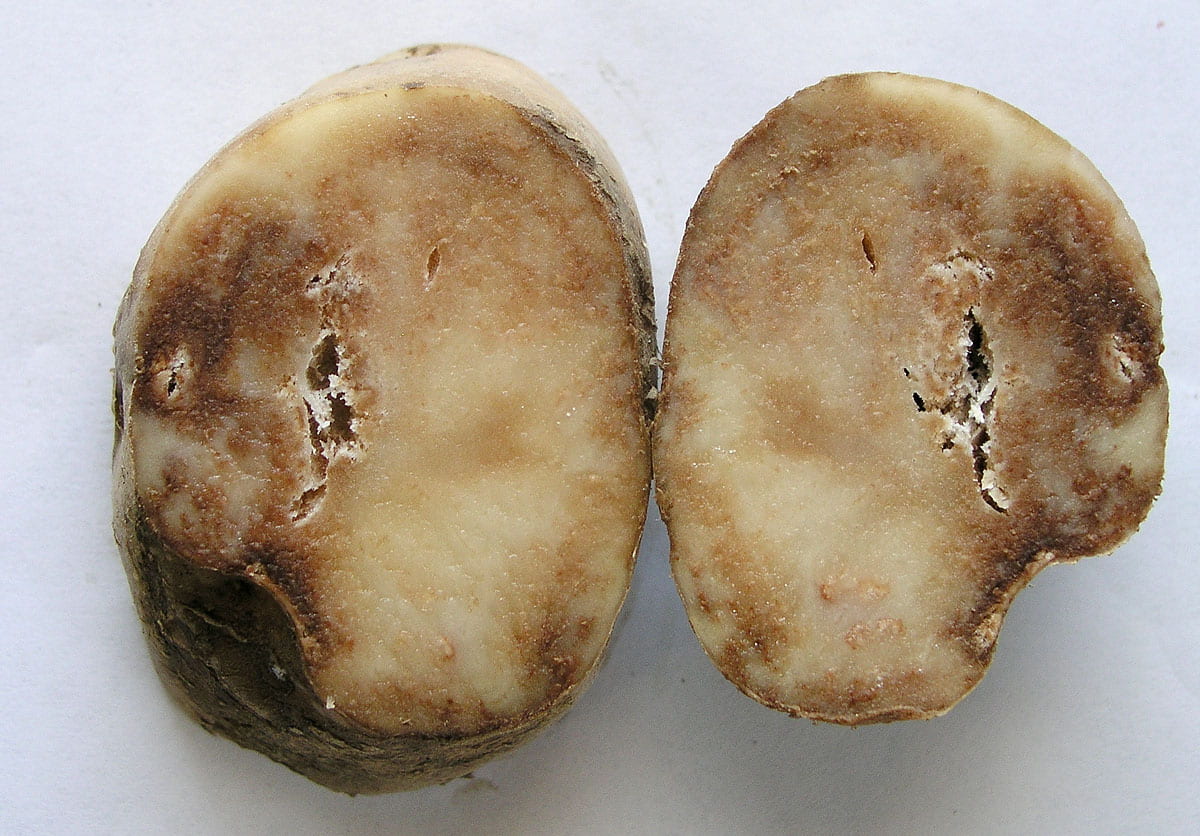Large leaf spots (lesions) are common with late blight. These were the main symptom seen in a commercial field on LI in 2009 when this disease was first found. The white growth on the leaf underside (see arrows, image below) contains hundreds of spores of the pathogen that could be dispersed by wind to other leaves in this field or beyond.
Upper leaf surface with late blight lesions (below)
Spores of the pathogen are visible on the lower (under) surface of leaves (below)
Close up of spores (below)
Leaf lesions can be small when they first start to develop (below left).
Symptoms also occur on other parts of potato plants including stems, petioles, and flowers. Following two photographs were taken on LI in 2006. White growth contains a lot of spores.
When first symptoms are mostly on stems (next two pictures below), it can be difficult to detect the onset of late blight, especially in a large planting as on a farm. All plant tissue above stem lesions will die shortly because the stem is completely affected, which is one reason that late blight is so devastating.
Below: tuber blight (Photos courtesy Dr. Steve Johnson, University of Maine Cooperative Extension.)
- Late blight FAQ
- Late Blight: Corrections of Misinformation
- Fungicide info for home gardeners
- Vegetable MD website
- Horticulture Section blog
- Late blight on tomatoes
2014 updates:
2013 updates:
- Late Blight: Recent Occurrences, Challenges, and Future Outlook (2013)
- Steps For Managing Late Blight In Organically Produced Tomato And Potato
2012 updates:
Late blight brochures for gardeners:
2011 updates:
- Potato Late Blight video – Presentation about late blight and its management in potato by Steve Johnson, Extension Potato Specialist in Maine with years of experience with this disease.
- National late blight program – Track and report late blight
- Playing ‘Russian Roulette’ in your garden with potatoes
- 2011 Outlook (organic focus)
2010 updates:



